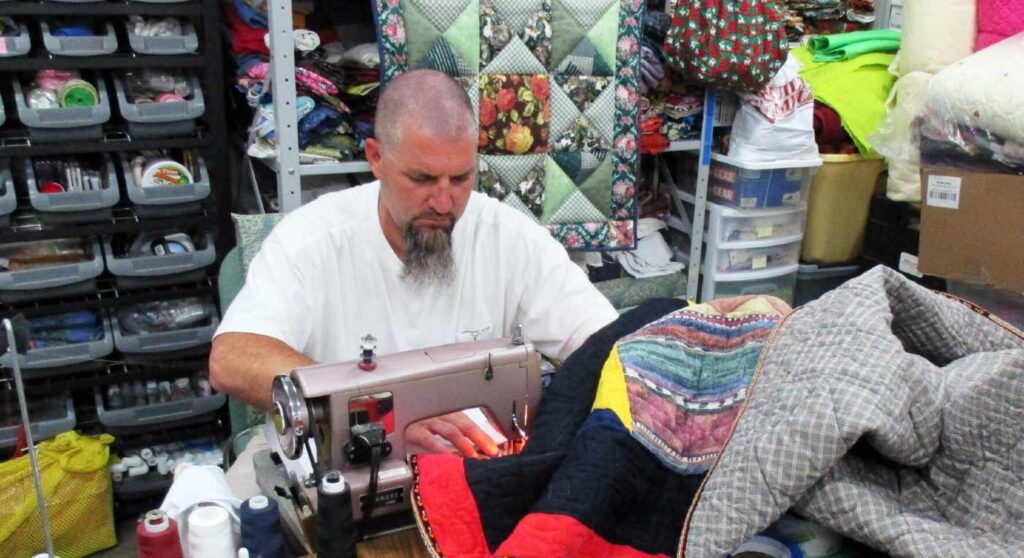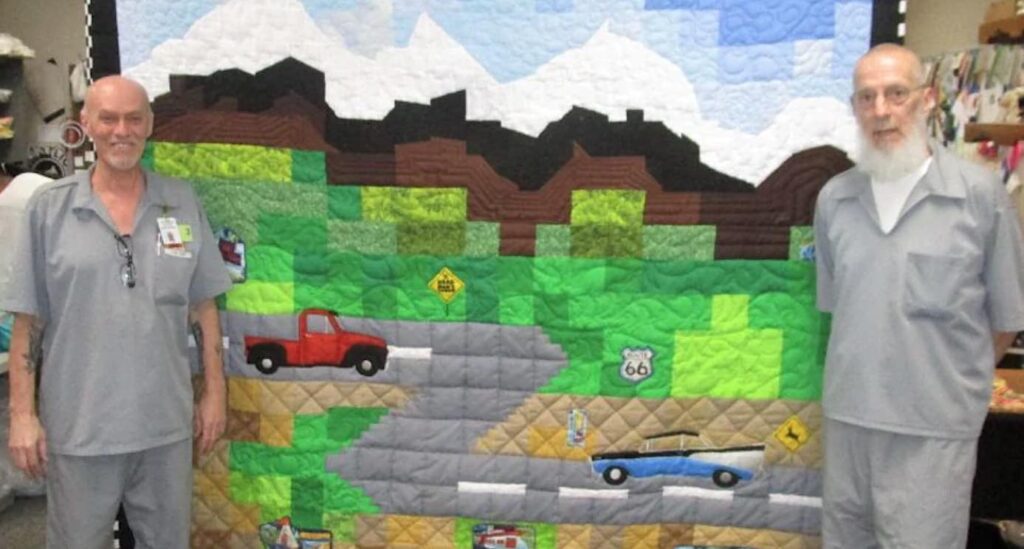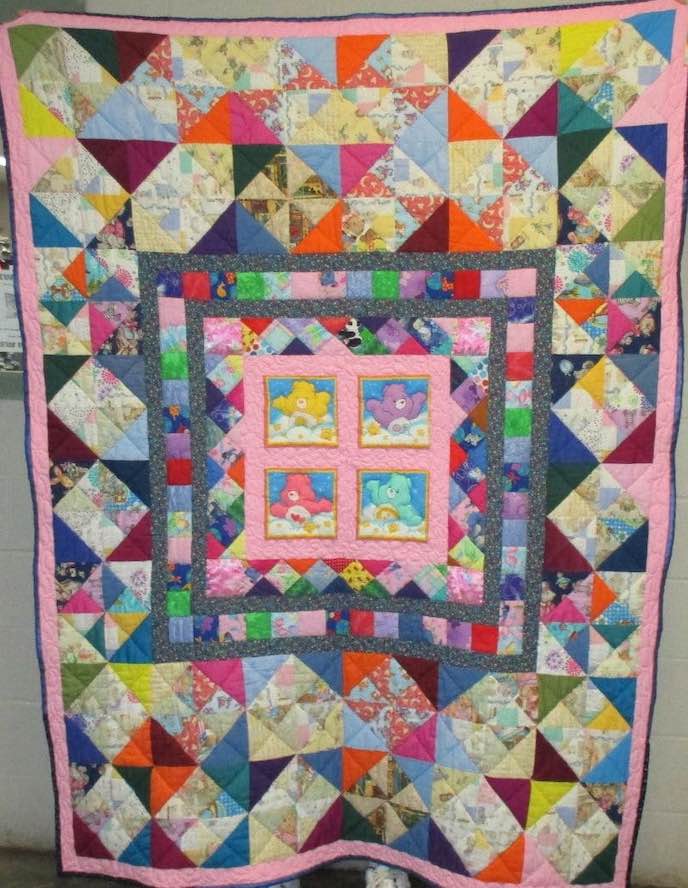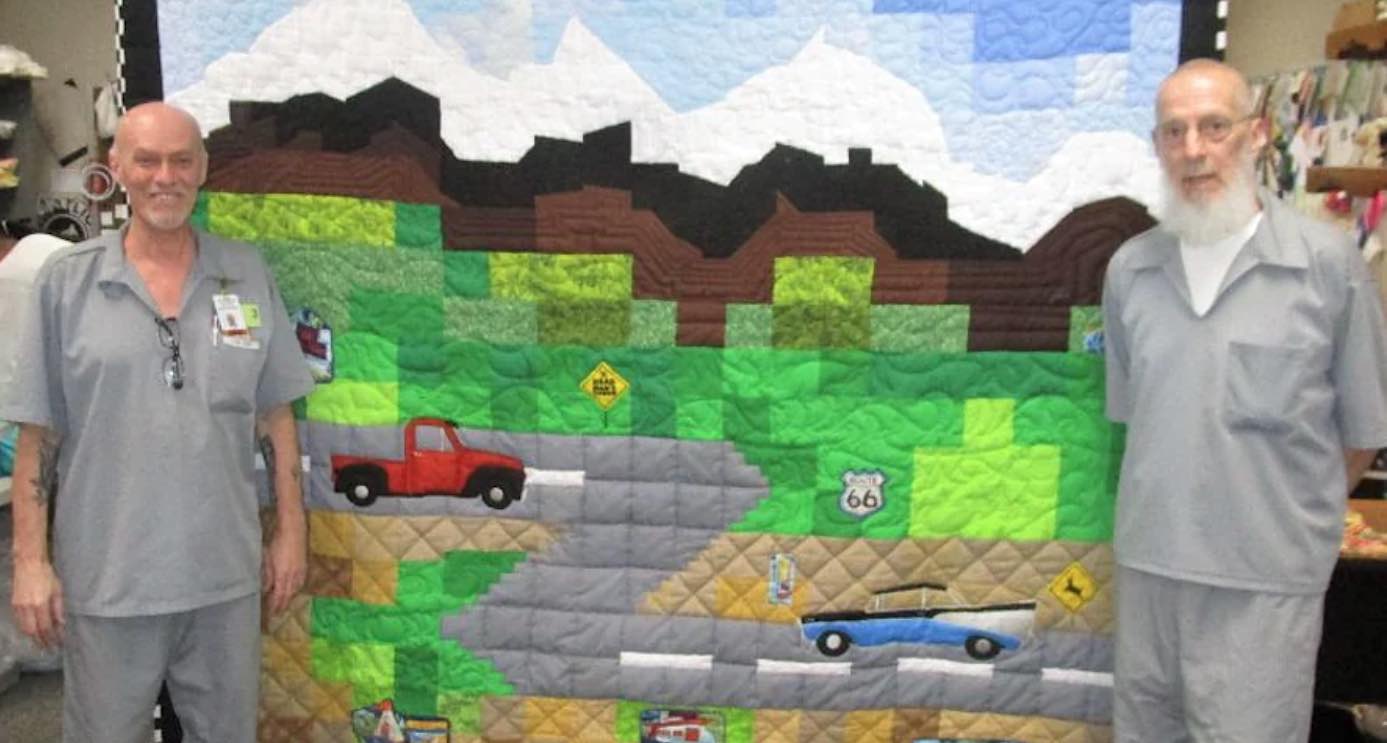
While quilting bees generally conjure images of grandmas piecing together scraps of fabric to create family heirlooms for future generations, crafting the colorful, cozy bed covers has become an outlet for incarcerated men not only to express their creativity but to give something positive back to the communities from which they came.
Over the past 10 years, more than 2,000 personalized quilts assembled by the inmates of Missouri’s South Central Correctional Facility have been donated to children in the state’s foster care system or auctioned off to fund local charitable organizations.
“When I learned that I could help bring a smile to a child’s face, I was all in,” Fred Brown said in an interview with The Washington Post. “Right now, I’m working on a puppy quilt that will go to a 13-year-old boy. I don’t know anything about him, but I have a feeling he’s going to love this quilt.”
William White, an upholsterer by trade, felt a special affinity for the project and joined soon after he began serving his sentence in 2015. Along with his other prison chores, White volunteers to spend seven hours a day, five days a week quilting with his peers.
“The guys were making these beautiful quilts to give away to foster kids, and I knew it was something I wanted to be a part of,” he told WaPo. “I have six kids, and sewing had always been my passion. And now, here was a way for me to give back.”
MORE: Baking Bad: Ex-Cons Are Mentored as Bakers and Now Their Bread is in the Best Restaurants
Based on the precept of “restorative justice” which stresses rehabilitation rather than punishment, according to the group’s coordinator, case manager Joe Satterfield, keeping the prisoners’ minds and hearts engaged while letting them feel like they’re making useful contributions to the community has been a game-changer, even for those who may spend the rest of their lives behind bars.
“You can see a change in their attitude, Satterfield told NPR’s St. Louis affiliate. “A light flips on like, Oh, this is a new avenue. I can actually be a part of something.”

Knowing firsthand the feeling of being forgotten by society, the inmates who participate in the quilting circle strive to personalize each quilt for foster care kids to let them know someone cares; that they’re not “throwaways.”
“You see the names of these kids in foster care; you see a 1-year-old or 2-year-old, and it kind of breaks your heart,” volunteer Rod Harney, who learned to sew in a seventh-grade Home Economics class told NPR. “But that lets us know we’re human still. You can’t express enough how it feels to do it.”

“Even though I’m incarcerated,” William White said, “I can still do something beautiful.”
RELATED: Former Prisoners Turn Waste Into Beautiful Furniture, Re-Building Their Lives At the Same Time
The South Central Correctional Facility quilting program relies on donated fabric and other sewing items. If you’re interested in learning more or making a donation, reach out to Joe Satterfield at Joseph.Satterfield@doc.mo.gov.
RELEASE the Good News So Others Can Know and Share It Too…




















